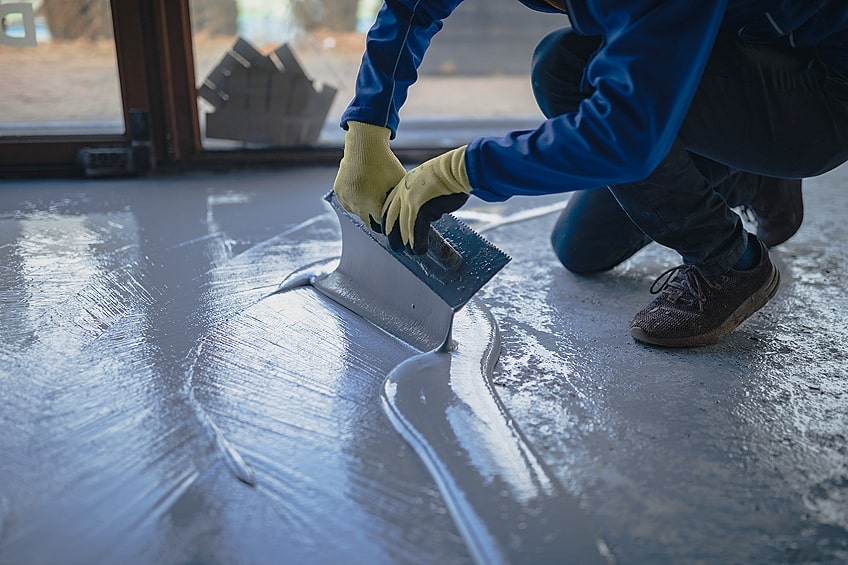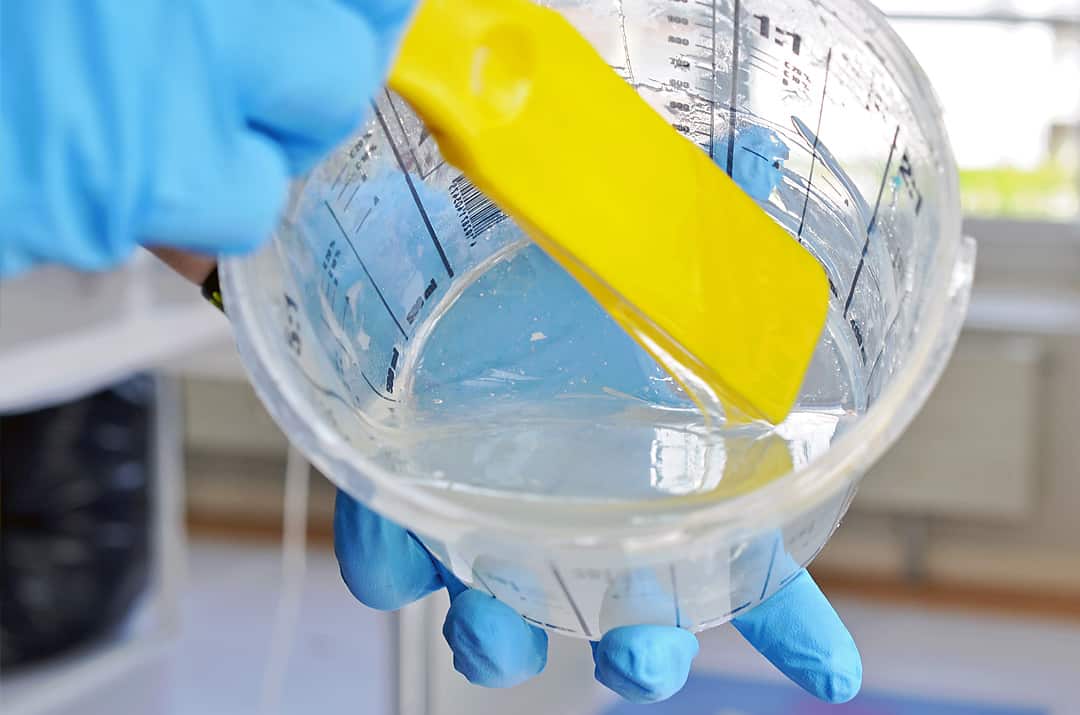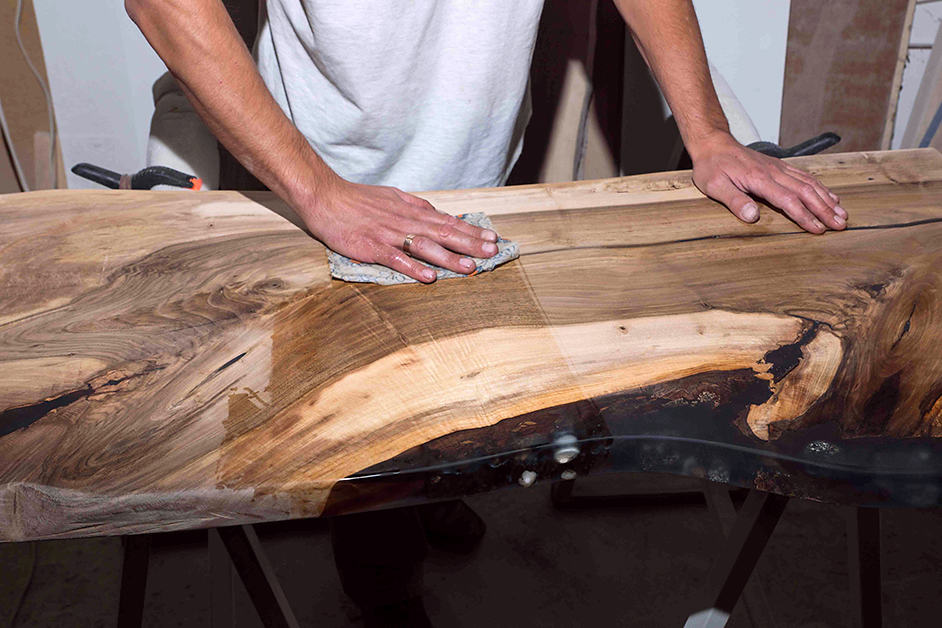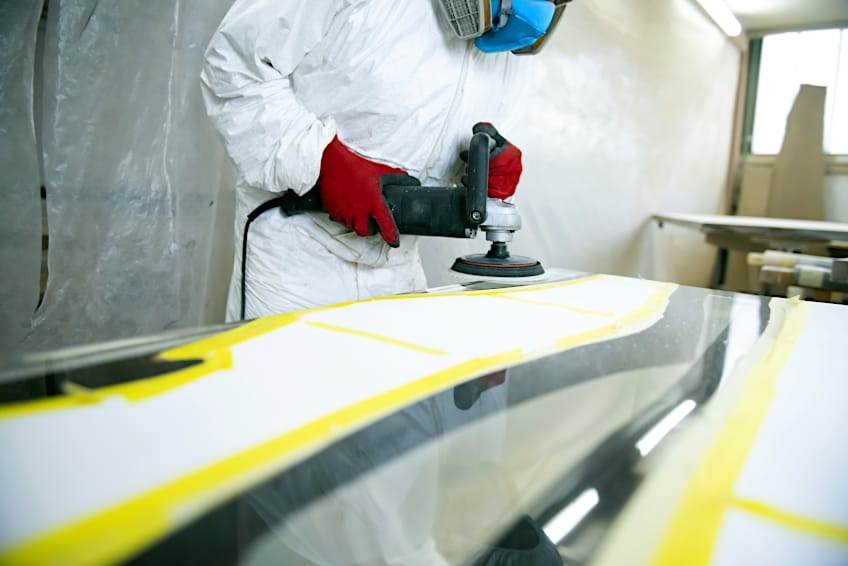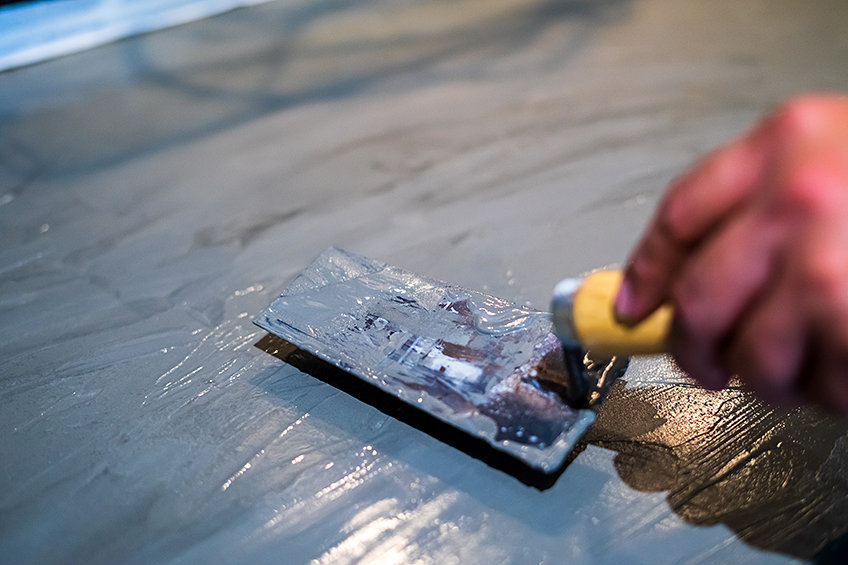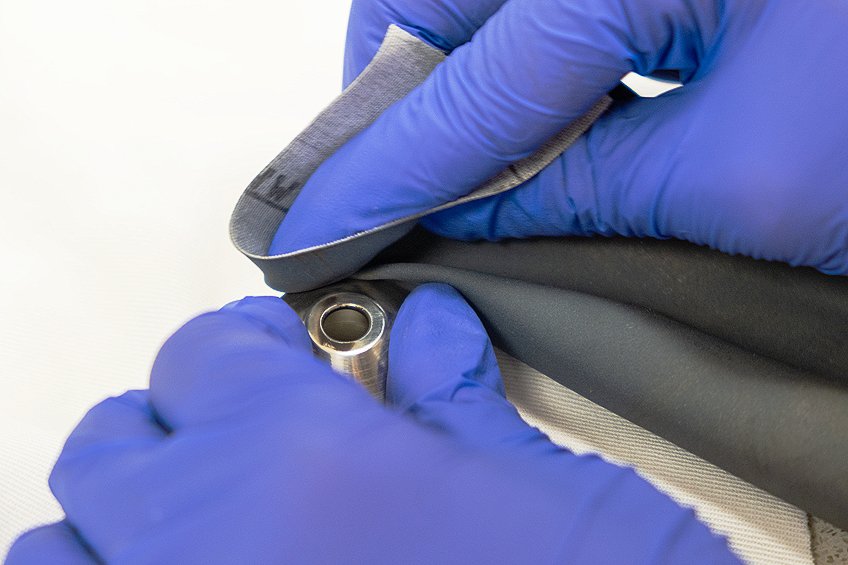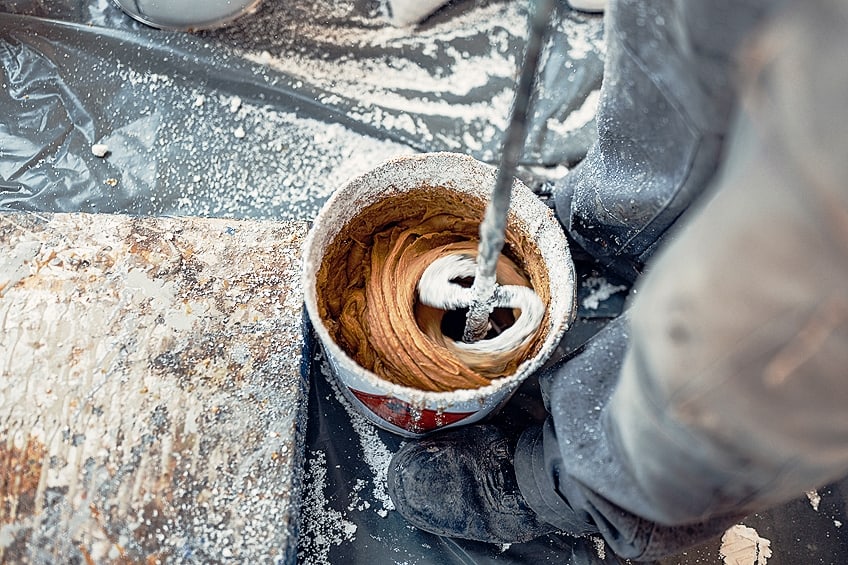Does Epoxy Stick to Metal – Understanding Adhesive Bonds
This post may contain affiliate links. We may earn a small commission from purchases made through them, at no additional cost to you. You help to support resin-expert.com
Epoxy resin is known for its strong adhesive properties, making it a popular choice for a variety of bonding applications. It is essential, however, to understand the principles of its use to achieve the best results, particularly when working with metals. Epoxy’s ability to adhere to metal is contingent on correct surface preparation and the specific type of metal in question.
Table of Contents
Key Takeaways
- Epoxy can form a strong bond with metal when the surface is properly prepared.
- Cleanliness and proper application techniques are critical for successful adhesion.
- A well-prepared metal surface and correct epoxy use result in a durable bond.
Understanding Epoxies
Epoxy resins are a go-to solution when you need a durable bond, especially with metal surfaces. It’s vital to choose the right type of epoxy and follow proper mixing procedures.
Epoxy and Metal Bonding
When bonding with metal, you must use a metal epoxy, a specific type that adheres well to metal surfaces. Typically, an epoxy consists of a resin and a hardener. These two components react with each other when mixed, creating a strong chemical bond. Mixing is a crucial step. Epoxy requires combining the resin with the hardener in precise proportions. This ratio varies among different products, so you should closely follow the manufacturer’s instructions. Incorrect mixing can lead to a weak bond or a failure to cure properly.
- Choose the right epoxy: Not all epoxies are suitable for bonding metal. You should look for metal epoxy, which is formulated to handle the characteristics of metal surfaces.
- Prepare the surface: The metal surface should be clean and free of any oils or debris. Sanding the surface can improve adhesion.
- Apply the mixed epoxy: Once mixed, apply the epoxy to the metal within the product’s working time, also known as ‘pot life’.
- Cure time: Allow it to cure as per the specified time, which can range from several minutes to hours, depending on the epoxy.
Remember, selecting the right epoxy for metal is critical. Metal epoxy ensures the bond will be robust and enduring, provided the mixing and application are performed correctly.
Surface Preparation
Before you apply epoxy to metal, it’s crucial to ensure the surface is ready for bonding. Proper surface preparation includes thorough cleaning to remove any contaminants, followed by roughening the surface to enhance grip for the epoxy.
Cleaning the Metal Surface
1. Remove Contaminants: Your metal surface may have oils, grease, or rust that can prevent the epoxy from adhering properly. Begin by wiping it down with a clean cloth to remove any loose debris.
- Use a degreaser to eliminate oil-based contaminants. It is essential to apply the degreaser liberally and according to the manufacturer’s instructions for optimal results.
- For rust removal, consider using a dedicated rust remover or a mixture of 10% phosphoric acid when applicable.
2. Ensure the Surface Is Dry: After cleaning, thoroughly dry the surface to prevent any moisture from becoming trapped under the epoxy layer, which can lead to inadequate bonding or long-term corrosion issues.
Roughening for Better Grip
1. Create a Rough Texture: A slightly rough surface provides better mechanical grip for the epoxy.
- Sand the Metal: Use sandpaper to gently sand the surface. Start with a coarser grit and move to a finer grit to create a uniformly roughened surface.
- Steel: Aim for a 60-120 grit range
- Aluminum: Use a finer 220 grit for more delicate surfaces
2. Remove Sanding Dust: After sanding, it is crucial to remove all dust from the surface as even small particles can interfere with the epoxy bonding.
- Wipe the sanded surface with a clean, dry cloth or use an air compressor to blow away any remaining dust particles.
- For optimal results, immediately proceed with the epoxy application after cleaning to avoid new contaminants settling on the prepared surface.
Application Techniques
When applying epoxy to metal surfaces, precision in preparation, mixing, and curing, along with the careful application, play critical roles in achieving an effective bond.
Mixing and Curing
Your epoxy will consist of a resin and a hardener. Mixing ratio is crucial; you must follow the manufacturer’s instructions to the letter to ensure the epoxy mix cures correctly. Typically, this is a 1:1 ratio, but it may vary. Once mixed, the epoxy’s viscosity will determine its flow; too thick and it may not spread well, too thin and it may not fill all gaps.
Remember, incorrectly mixed epoxy will not harden properly and is difficult to remove.
Applying to Metal Surfaces
To apply epoxy to metal, ensure the surface is clean and free from grease or rust. Use a brush or a spatula for an even application. Apply in a thin, even coat if you want a smooth surface, or layer it more thickly if you need to fill gaps or voids. Watch the epoxy’s flow as you work; it should self-level if your mixing ratio was correct and the viscosity is appropriate. After application, cure the epoxy as specified by the product instructions, this is when it hardens and forms a durable bond.
Common Metals for Epoxy Adhesion
When you’re working with epoxy, understanding its compatibility with various metals is crucial for ensuring a strong and durable bond. Metals like aluminum and steel, with their non-porous nature, generally offer a reliable surface for epoxy to adhere to.
Epoxy with Aluminum
Aluminum is a lightweight, non-ferrous metal that is commonly bonded using epoxy. It is non-porous and does not typically oxidize in a way that prevents adhesion; instead, its oxide layer can actually improve the bond with epoxy. When using epoxy with aluminum, ensure the surface is clean to promote better adhesion.
- Surface Preparation: Clean the aluminum surface to remove any contaminants. Lightly sand the surface to create a profile for better bonding.
- Adhesion Characteristics: Aluminum’s naturally occurring oxide layer contributes to a good adhesive bond.
Steel and Epoxy Interaction
Steel, including stainless steel variants, provides a strong foundation for epoxy adhesion due to its non-porous and rigid characteristics. A properly prepared steel surface can prevent oxidation and create an optimal environment for epoxy bonding.
- Surface Preparation: Clean the steel surface thoroughly. Remove any rust or scale to prevent interference with adhesion. Degrease the surface to eliminate any oils or residues.
- Adhesion Characteristics: Stainless steel is especially receptive to epoxy adhesives given its rust-resistant properties. Ensuring the metal type is free from oxidation is key for a strong bond.
Remember, the longevity of the bond greatly depends on the surface preparation and the quality of both the metal and epoxy used.
Challenges and Solutions
In working with epoxy and metal, the primary issues you might encounter include difficulties with non-porous surfaces and the formation of bubbles during application. Understanding how to address these challenges ensures a successful and durable bond.
Dealing with Non-Porous Metals
Non-porous metals, such as certain stainless steel or aluminum surfaces, can resist epoxy due to their smooth texture. For a robust bond:
- Surface Preparation: Scuff the metal lightly with a sandpaper or use an etching primer. Aim for a 220 grit to create enough texture without overly scratching the surface.
- Cleanliness: Ensure the metal is devoid of oils or residues. Clean with isopropyl alcohol or an industrial cleaner and allow it to dry fully before applying the epoxy.
Preventing and Managing Bubbles
Bubbles can compromise the integrity of the epoxy and are often a result of trapped air, rapid curing, or improper mixing:
- Methodical Mixing: Mix epoxy systematically to reduce air entrapment. Follow the manufacturer’s instructions closely for the correct ratio and mixing time.
- Application Technique: Apply in thin layers rather than a thick single coat, allowing each layer to settle and self-level.
- Environmental Conditions: Warmer temperatures can increase the likelihood of bubble formation. Work in a cooler, stable environment and consider using a slower-curing epoxy when conditions are not ideal.
By meticulously preparing the metal surface and paying close attention to the mixing and application process, you can prevent most issues related to adhesion and air bubbles, ensuring a strong and seamless repair.
In conclusion, due to its unique chemical composition and strong adhesive properties, epoxy proves to be an exceptionally effective material for bonding to metal surfaces. Whether used in industrial applications, home repairs, or creative projects, its ability to create a durable and reliable hold ensures that epoxy remains a preferred choice for adhering to metal, highlighting its versatility and efficiency in a wide range of uses.
Frequently Asked Questions
Does Epoxy Work Well for Bonding Metal Surfaces Together?
Absolutely! In my experience, epoxy is an excellent adhesive for bonding metal surfaces together. It creates strong, durable bonds that can withstand various conditions, making it ideal for a wide range of metal bonding applications. Whether I’m repairing a broken metal part or attaching two metal pieces together, epoxy provides reliable adhesion and ensures a lasting bond that holds up over time.
What Type of Epoxy Should I Use for Metal Bonding?
Choosing the right epoxy for metal bonding is crucial for achieving optimal results. Personally, I prefer using epoxy formulations specifically designed for metal surfaces. These epoxies often contain additives that enhance adhesion to metal substrates and provide excellent resistance to heat, moisture, and chemicals. Additionally, I look for epoxies with fast curing times to minimize downtime and ensure efficient bonding.
How Do I Prepare the Metal Surface for Epoxy Bonding?
Proper surface preparation is key to achieving a strong bond between epoxy and metal. Before applying the epoxy, I thoroughly clean the metal surface to remove any dirt, grease, or contaminants that could interfere with adhesion. Then, I lightly roughen the surface using sandpaper or a wire brush to create a rough texture that enhances mechanical bonding. Finally, I degrease the surface with a suitable solvent to ensure maximum adhesion. Following these preparation steps ensures that the epoxy bonds securely to the metal surface for a reliable and long-lasting bond.


